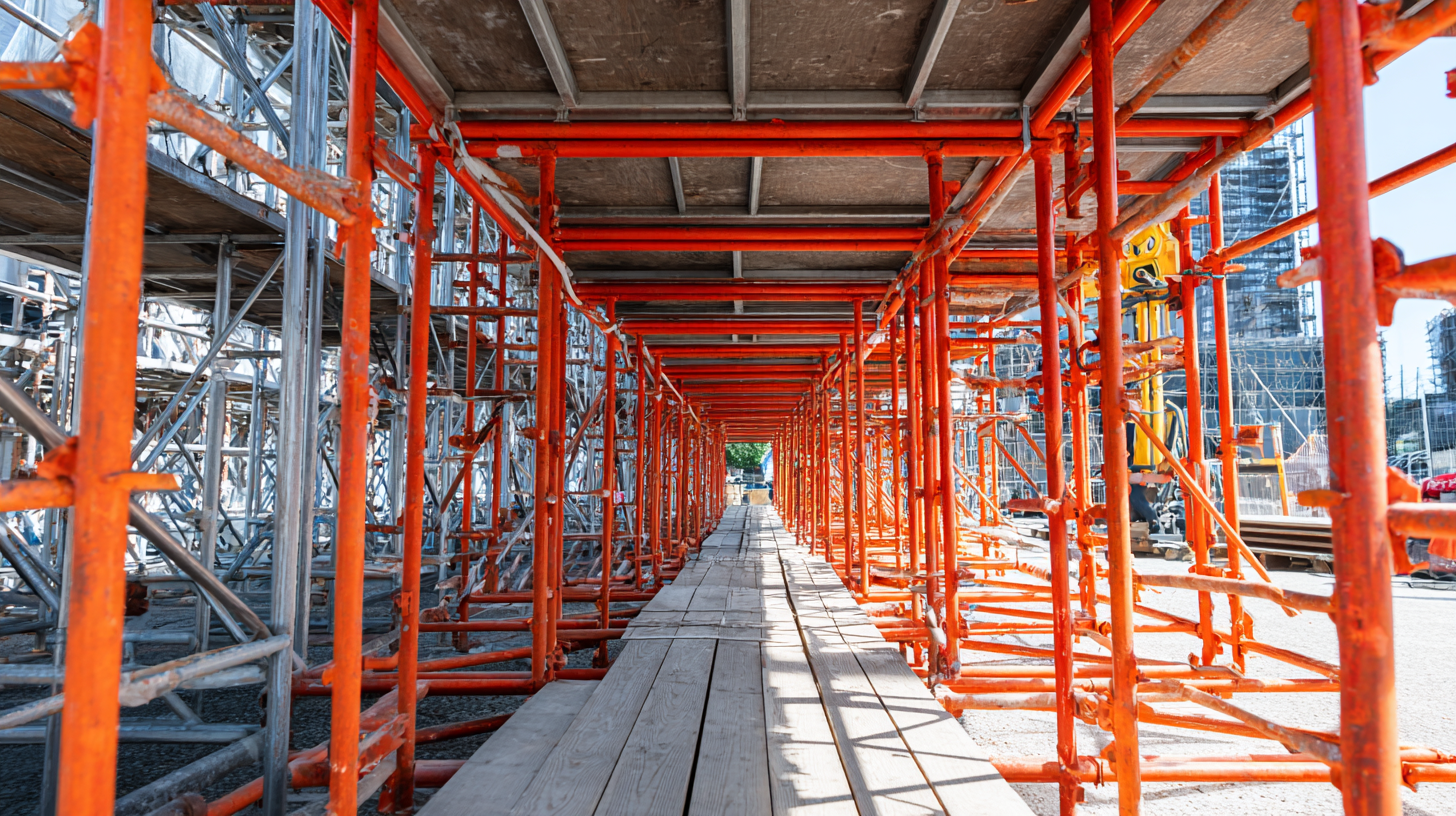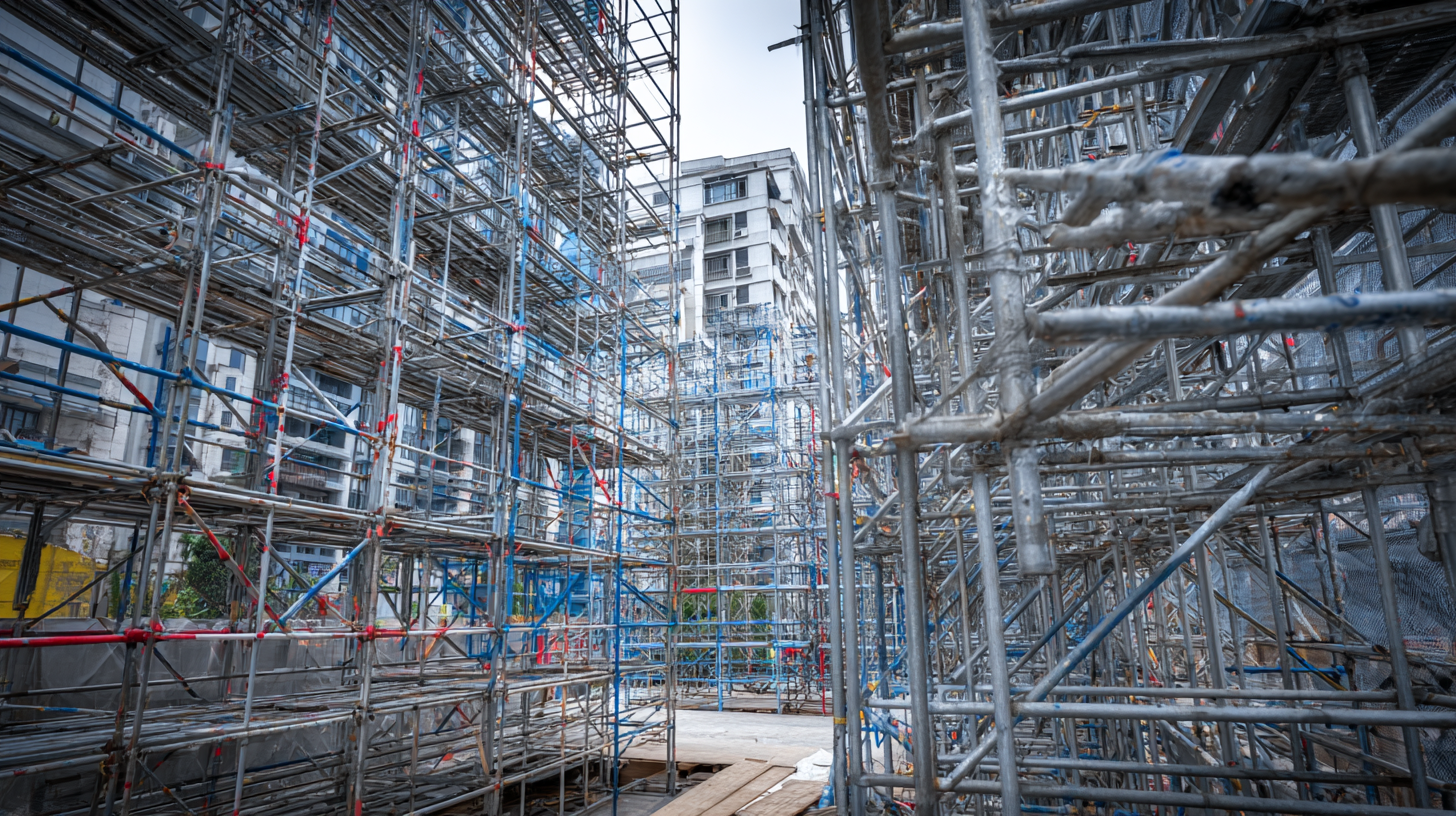 +86 18531741341
+86 18531741341
Leave Your Message
In the construction industry, the selection of scaffolding parts is critical to ensuring safety, efficiency, and project success. According to a report by the Occupational Safety and Health Administration (OSHA), falls are among the leading causes of fatalities in the construction sector, highlighting the importance of using high-quality scaffolding components. The global scaffolding market is projected to reach USD 53.45 billion by 2027, driven by the rising need for efficient construction solutions and the emphasis on safety standards.

As industry professionals navigate various options, they must consider key factors such as material durability, load capacity, and compliance with local regulations when choosing scaffolding parts. With the promise of robust manufacturing capabilities in China, project managers are increasingly recognizing the importance of sourcing top-notch components to enhance both safety and operational productivity.
When embarking on a construction project, the importance of quality scaffolding parts cannot be overstated. Scaffolding serves as the backbone of a safe and efficient work environment, enabling workers to reach heights while ensuring their safety. Using durable and reliable scaffolding components not only minimizes the risk of accidents but also enhances productivity. Poor-quality parts can lead to structural failures, resulting in costly delays and liability issues.
Tip: Always opt for scaffolding parts that adhere to safety standards and regulations. Look for certifications and reviews of the products to ensure they meet industry benchmarks. Investing in high-quality components can save you money in the long run by preventing accidents and reducing maintenance costs.
Moreover, it is essential to inspect scaffolding parts regularly. Regular checks for wear and damage will ensure that each component is functioning properly and safely. This proactive approach is crucial for maintaining a safe worksite and avoiding injuries.
Tip: Maintain a checklist for inspections that includes base plates, guardrails, and planks. A clean and organized inspection routine can help you quickly identify any potential issues before they escalate into problems.
When selecting scaffolding components for your projects, several key factors must be considered to ensure safety, efficiency, and compliance with industry standards. One of the primary considerations is the load capacity of the scaffolding parts. According to the Occupational Safety and Health Administration (OSHA), it is crucial to choose components that can support the maximum intended load, which typically ranges from 75 to 300 pounds per square foot, depending on the type of work being conducted. This ensures the safety of workers and prevents potential accidents on-site.
Another essential factor is the material of the scaffolding parts. Steel and aluminum are the most common materials used due to their durability and strength. A study by the Scaffold Safety Association indicates that steel scaffolding can withstand harsh weather conditions and heavy loads, making it a preferred choice for construction projects. Additionally, when selecting scaffolding components, consider the ease of assembly and dismantling, which can significantly impact project timelines and labor costs.
Tips: Always verify that your scaffolding parts meet local building codes and industry standards to avoid compliance issues. Additionally, look for manufacturers that provide detailed specifications and load rating charts, as this will help ensure you make informed decisions. When in doubt, consult with a scaffolding expert to ensure your project’s specific needs are met efficiently.
When embarking on a scaffolding project, many individuals often overlook critical factors that can lead to costly mistakes. One common error is prioritizing price over quality. While it’s tempting to opt for the cheapest materials, doing so can compromise the safety and stability of the scaffolding. It’s essential to remember that investing in high-quality parts not only ensures the safety of the workers but also enhances the durability of the scaffolding, ultimately saving money in the long run.
Another frequent pitfall is misjudging the specific needs of the project. Scaffolding materials are not one-size-fits-all, and each project presents unique requirements based on height, load capacity, and site conditions. Failing to assess these needs can result in selecting inappropriate components, which could lead to structural failures or accidents. Taking the time to plan and consult with experts can help avoid these common mistakes and ensure that the scaffolding setup is both safe and efficient.

When it comes to scaffolding projects, the durability and safety of scaffolding parts are paramount. To ensure a secure working environment, it’s crucial to assess the quality of materials used in scaffolding components. Strong materials like steel and aluminum are often preferred due to their ability to withstand heavy loads and resist corrosion, enhancing their longevity. Always choose parts that are compliant with industry safety standards, as they are rigorously tested for reliability under various conditions.
Tip: Inspect each scaffolding part for signs of wear and tear before installation. Look for rust, cracks, or deformities, as these can compromise the integrity of the structure and pose safety risks to workers.
Additionally, consider the type of scaffolding system you plan to use. Some systems, like modular scaffolding, offer flexibility and easy assembly, while others may provide greater stability for heavy-duty applications. Ensure that all components, including platforms and guardrails, are designed to bear the intended load and provide secure footing for workers.
Tip: Regular maintenance of scaffolding parts is essential. Schedule periodic inspections and replacements as needed to maintain safety standards and prolong the life of your equipment.

When selecting the best scaffolding parts for your projects, it’s essential to consider the impact of global manufacturing standards. These standards ensure that scaffolding components are produced with consistent quality, safety, and durability, which is crucial for maintaining worker safety on construction sites. Understanding these standards allows project managers to make informed decisions that not only comply with regulations but also enhance the overall efficiency of the scaffolding system.
One tip when choosing scaffolding parts is to verify that they are compliant with the relevant global standards such as ANSI, OSHA, or EN standards. This can help you avoid subpar materials that may compromise safety and performance. Additionally, look for suppliers who provide certifications and documentation to prove their products meet these international requirements.
Another important consideration is the compatibility of different scaffolding components. Ensure that the parts you select work seamlessly together, as this can greatly affect the stability and functionality of the entire scaffolding system. Opt for modular scaffolding systems that offer the flexibility to adapt to various project requirements while adhering to global standards. This not only streamlines your scaffolding setup but also guarantees a safer work environment.
| Issue | Impact | Standards Affected | Recommended Solution |
|---|---|---|---|
| Compatibility with Existing Equipment | Increased downtime and costs | ISO 9001 | Conduct thorough compatibility assessments |
| Quality Assurance | Increased risk of accidents and failures | ASTM A123 | Ensure suppliers meet required quality standards |
| Regulatory Compliance | Legal penalties and project delays | OSHA Regulations | Stay updated with regulations and standards |
| Supplier Reliability | Supply chain disruptions | ISO 45001 | Evaluate supplier track records |
| Material Selection | Impact on project safety and longevity | EN 10025 | Choose materials based on project needs |
